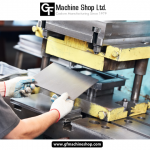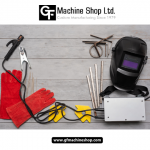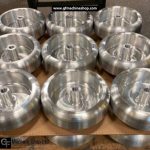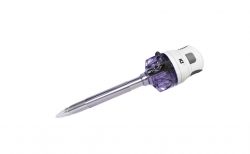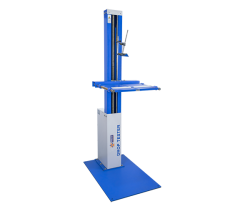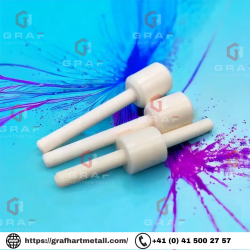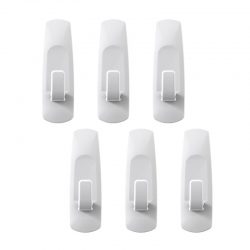Metal Fabrication at Its Best: Forging Excellence
See how metal manufacturing transforms basic resources into creativity and inventiveness. This age-old trade has evolved from humble beginnings to cutting-edge inventions, becoming a precise science that shapes entire industries. Producing metal involves a delicate dance between contemporary machinery and expert hands that results in masterpieces that are beyond imagination.
We will go into the intriguing history and development of Metal Fabrication Hamilton, Ontario in this blog post. We’ll look into metal-shaping techniques used by artists in Hamilton, Ontario, and abroad. We will learn about the advantages, disadvantages, and varied applications of this adaptable trade as we investigate it.
History and Development of Metal Fabrication
Ancient civilizations grasped the potential of metal and started making it thousands of years ago. The ability to sculpt and manipulate these rich components was honed by artists of the Bronze and Iron Ages. Initially, metals were cast and hammered.
Manufacturing of metal was revolutionized by modern metallurgy and technology. Complex metal components were mass-produced throughout the Industrial Revolution by steam-powered machinery. Modern manufacturing was made possible and the industry was transformed.
In recent decades, metal fabrication has been dominated by CNC machining. Robust designs and exacting tolerances that are unattainable for humans are made possible by these automated technologies. With CNC machining, fabricators can produce customized parts fast and precisely.
Among the many tools used by modern metal fabricators are 3D printing, welding robots, waterjet, plasma, and laser cutting machines! These developments have boosted production and created new market opportunities.
Every industry needs skilled metal fabricators who can blend art and science, whether it be aircraft, automotive, building, electronics, healthcare equipment, or custom furniture. As technology and consumer needs change swiftly, metal production pushes boundaries even farther.
The lengthy history of metalworking demonstrates how humans have always strived for creativity and perfection. To discover more about this fascinating realm, let’s examine the methods used by experts at Machine Shop Hamilton, Ontario!
Various Metal Fabrication Techniques
Playstation The intricate process of turning raw metal into finished things is called metal fabrication. The goals and advantages of various metal production methods and procedures vary. Look at a few of the most well-known ones.
A fundamental metalworking technique is cutting. This can be accomplished by waterjet, laser, shearing, or sawing. Accurate cutting and the proper size and shape of the metal are guaranteed by these technologies.
Another essential metalworking procedure is bending or shaping. With the use of specialized tools, the metal is shaped into a variety of curves and angles. Press brake or roll shaping are frequently used for this.
Another crucial metalworking procedure is welding. To join, a massive amount of heat is applied to melt two metal components together. The precision and strengths of MIG, TIG, and arc welding vary. Metal fabrication uses a variety of techniques in addition to these primary ones. These consist of polishing, painting or coating, machining, grinding, assembling, and other processes.
Pros and drawbacks of metal fabrication
Metal manufacturing has many applications and is adaptable. Creating intricate designs with precision has many advantages. Precise prototypes and unique parts are made possible via metal manufacturing.
An additional advantage of producing metal is its durability. The strength and resilience of metals are advantageous in applications that require robust components. Metal fabrication produces dependable construction structural elements and manufacturing machinery parts.
The process of making metal is economical. Through process improvement and the use of effective techniques, manufacturers can reduce costs without sacrificing quality. For firms looking for the highest return on investment, this makes it tempting.
Metal fabrication is a process with limitations, just like any other. Production time is a constraint. Project complexity and material availability have a significant impact on lead times. Because of possible inefficiencies in scaling up manufacturing methods, metal fabrication might not be the best choice for applications requiring mass production.
Furthermore, the limitations in malleability or corrosion resistance of some metals may make them unsuitable for use in particular applications. There are drawbacks to metal fabrication, but they are outweighed by its advantages.
Building,
Metal fabrication is a multifaceted and vital technique used in many fields. Building sturdy goods and structures requires metal fabrication from the production process all the way through to construction. Let’s look at some of the most important metal fabrication sectors.
1. Automobile Industry: Metal fabrication is a necessary component of auto production. Engine components, exhaust systems, frames, and chassis are formed and put together. Modern technologies and precision engineering are used by metal fabricators to create cars that are safe and effective.
2. Aerospace Industry: Every part of an airplane needs to be dependable and accurate. For use in turbine engines, landing gear, aircraft bodies, and wings, metal fabrication produces strong, lightweight alloys made of titanium or aluminum.
3. Construction Industry: Iron and steel construction reinforces structures like buildings and bridges. Steel staircases, trusses, columns, beams—the list goes on! By transforming unfinished materials into usable structures, metal fabricators assist architects in realizing their visions.
4. Energy Sector: Power generation facilities use custom-built equipment made of stainless steel or copper-nickel alloys because of their resistance to corrosion. From oil refinery pipelines to hydroelectric turbines, metal fabrication supports the efficient operation of energy companies in several industries.
5. Metal fabrication techniques are used in the production of electronics to create complex components such as wiring harnesses, power supplies, and sheet-metal casings. It is possible to manufacture circuit boards, computers, and laptops precisely, consistently, and effectively.These are a few ways that metal production influences
For More Info:- https://www.gfmachineshop.com/

